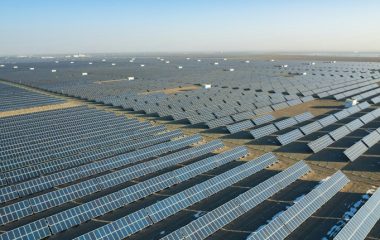
Photo: CARISMA project
Authors: Mak Đukan (second from left), Starfish Energy, mak@starfishenergy.org, and Andreas Tuerk (first from left), Joanneum Research, andreas.tuerk@joanneum.at
The new Energy union governance regulation was finally agreed upon and it applies both to Southeast European EU member states and Energy Community countries. Under these new regulations, member states and EC countries will have to develop a National Energy and Climate Plan (NECP) that significantly simplifies planning and monitoring of progress in energy and climate target achievement. This text presents the conclusions of the CARISMA project workshop that was held in Zagreb on 18th June 2018[1] and that discussed NECP’s and challenges of decarbonization in Southeast Europe.
On June 20, 2018 the EU Commission, Parliament and Council agreed upon a final version of the Governance of the Energy Union regulation that was first set forth in November 2016 as part of the Winter Package[2]. Together with a new renewable energy target of 32% and an energy efficiency target of 32.5%, this new regulation marks another stepping stone in bringing the Winter Package closer to implementation.
National Energy and Climate Plans
Within the new governance regulations, all EU member states will have to prepare a National Energy and Climate Plan (NECP) for the period 2021 to 2030 and submit the first version by 31st December 2019[3]. The EU proposed this new regulation mainly to ensure that national objectives and policies are in line with EU objectives and that to this end the 2030 EU climate and energy goals are achieved. Namely energy and climate policy on the EU level is very complex and there are too many pieces of individual legislation that lead to incoherence, overlap and lacking of integration between energy and climate policy. The new NECP’s are supposed to integrate 31 and delete 23 pieces of individual planning, monitoring and reporting of the energy and climate acquis[4]. In addition, they are expected to provide certainty and predictability for investors.
Finally, they will also incorporate the provisions of the Climate Monitoring Mechanism Regulation and make them in line with the provisions of the Paris Agreement[5]. Namely this regulation required EU member states to develop and submit “Low-carbon development strategies” (LCDS) with a 2050 outlook until 2015. However out of 28 member states only 11 submitted such a strategy, and have done so with very variable quality standards[6]. Hence besides NECP’s member states will under the new regulation also have to develop such long-term strategies that contribute to keeping global average temperatures increase in accordance with the Paris Agreement limits.
NECP’s in the Energy Community countries
Energy Community countries will also have to abide to the new reporting and monitoring mechanism. The Energy Community Secretariat recently published policy guidelines[7] on the development on NECP’s. These guidelines are not legally binding and they do not establish any hard deadline for the treaty signatories. However, they follow most of the recommendations that apply to regular EU member states. The countries in the region should ideally submit their first draft NECP’s until March 2020 and final plans until October 2020. They should also provide progress reports every two years starting in 2022, while the plans should be updated once in the period between 2023 and 2030 and reflect changes in circumstances.
The challenges of decarbonization in Southeast Europe-Conclusions of the CARISMA Workshop
Southeast Europe is very specific in terms of its decarbonization and this should be reflected in2050 planning. First of all the region is highly reliant on coal power and unlike other parts of the EU, the SEE countries except Croatia do not even consider an option to phase out coal[8]. CEE Bankwatch that tracks the planned coal plants in the region estimates that the construction of 2.6 GW of new coal power plants are being planned before 2020, another 3.6 GW of plants are in planning phase but they have not yet received permits of permits have expired, and another 2.5 GW are planned for construction in the period between 2025 and 2030[9]. If these plants get constructed, their emissions will be “locked in” for another 40 years.
Since a large number of people work in the coal sector, a phase-out should be gradual. Energy transition strategies need to be designed so that they enable new economic opportunities. And since carbon intensities of Western Balkan countries are almost double than those in the EU[10], technological improvements are required to mitigate the effect of entrance into EU ETS.
Coal phase phase-out and operational capacity (Source: Beyond Coal Campaign, 2018)
Another major challenge in the region is energy poverty. Despite of the lowest electricity prices in Europe, in some countries, more than 30% of individual households struggle to pay their electricity bills[11]. According to DOOR[12] that conducted a study with 833 field visits across the region, about 45% of these households suffered from mold and half of them experienced draught through windows and doors. The government should take this into account when designing future energy policies. Decarbonisation plans should support the development of innovative renewable energy business and financing models that rely on self-consumption, are independent of public support and engage citizens.
The Green Energy Cooperative[13] has recently pioneered a first crowdinvesting campaign in Croatia, where citizens investing between 130 and 1300 EUR financed a 30 kW solar PV project on the roof of a municipality owned building in Krizevci[14].
Finally, a low carbon future will also entail a large penetration of renewable energy power plants, and mainly solar PV and wind power plants. Power generation from these plants fluctuates strongly in relation to weather patterns. This means that future power systems will have to be able to integrate electricity from such sources, meaning that conventional power plants will have to ramp up and down depending on need.
The region will have to integrate its power systems in order to provide individual countries with greater flexibility. This includes developing a Regional Electricity Market and integrating this into the EU Internal Electricity Market, a measure that was recently supported by the Sofia Declaration of the EU-Western Balkans Summit[15].
_________________________
[1] www.starfishenergy.org/events
[2] http://europa.eu/rapid/press-release_IP-18-4229_en.htm
[4] https://eur-lex.europa.eu/legal-content/EN/TXT/HTML/?uri=CELEX:52016PC0759R(01)&from=EN
[5] https://ec.europa.eu/energy/en/topics/energy-strategy-and-energy-union/governance-energy-union
[7] https://www.energy-community.org/news/Energy-Community-News/2018/06/19.html
[8] https://beyond-coal.eu/data/
[9] Pippa Gallop, CEE Bankwatch, personal communication
[10] Andreas Tuerk, own calculations
[11] https://1-stromvergleich.com/strompreise-in-europa/
[12] http://door.hr
[13] http://www.zez.coop
[14] Ivan Zokovic, ZEZ, personal communication
[15] http://www.consilium.europa.eu/media/34776/sofia-declaration_en.pdf









Be the first one to comment on this article.